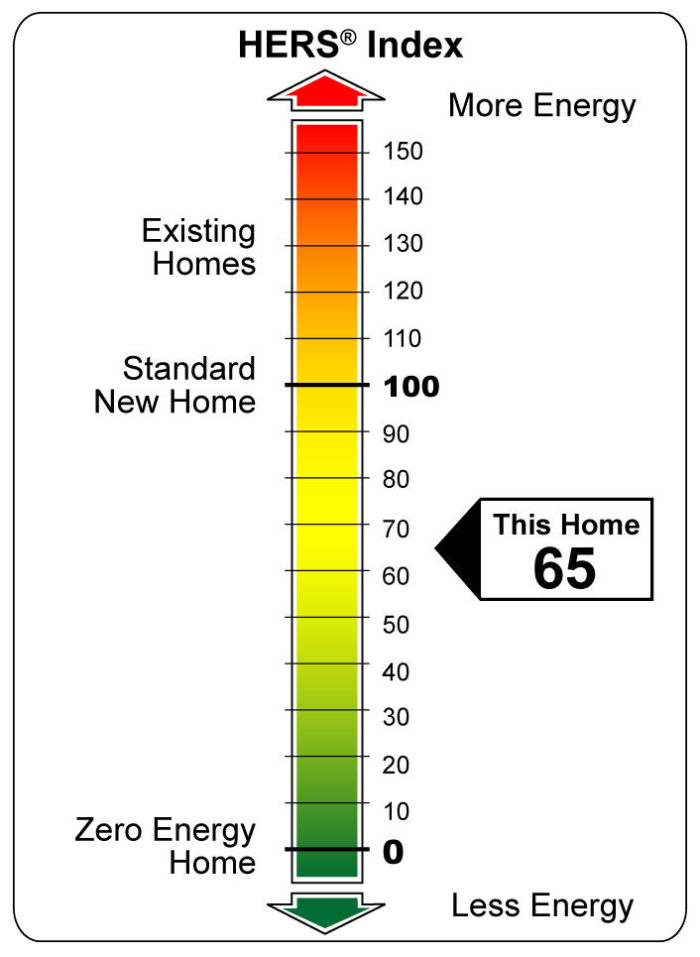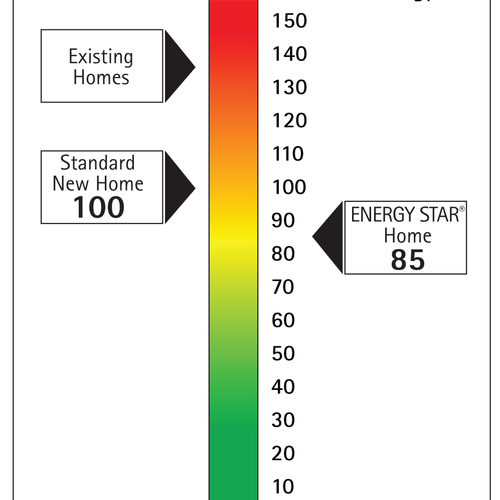
Image Credit: RESNET
When I’m explaining home energy ratings and the HERS Index to people, I often get asked, “How accurate is a HERS rating? Will my energy bills really be close to what it says?” In the mind of the questioner, that’s one question. To someone who understands what HERS ratings really measure, it’s two separate questions. Let me explain.
Just as there are two types of people in the world, there are two types of energy labels. One is an operational value label, which attempts to factor in all the characteristics of the house, including how it’s lived in. The other is an asset value label, whose purpose is to take the variation caused by people out of the equation.
Asset labels vs. operational labels
A HERS rating is an asset label. The HERS Standards set the values used for operational characteristics so that thermostat setpoints, the energy used by plugloads, and other operational characteristics are the same from one house to another.
For example, when a HERS rater enters the data for a home, there’s no place to enter how many televisions the home has. In Chapter 3 of the HERS Standards, you’ll find that the calculation for energy used by televisions comes from a formula based on the number of bedrooms:
TV kWh/yr = 413 + (69 x Nbr)
In the formula, Nbr stands for “number of bedrooms.” Every three-bedroom home that gets a HERS rating will be modeled as using 413 + (69 x 3) = 620 kilowatt-hours per year for televisions. If you see a car with a “Kill Your Television” bumper sticker in the driveway of a three-bedroom home, there’s a good chance they’ll use less than 620 kWh/yr for TV. If another three-bedroom house has a constant pulsating blue glow from every room, they probably use more than 620 kWh/yr. The HERS Index won’t capture those operational differences.
In contrast, an operational label would attempt to get at a more accurate number for the energy used by televisions (and everything else). One way would be to find the energy consumption rating for each TV and multiply by the number of hours per year that it’s on. Another would be to measure the energy use for each TV. A third would be to analyze the energy bills.
Is one better than the other?
Both labels are useful. The home energy rating is useful because we want to know how energy-efficient one home is compared to another. That’s what the HERS Index does for us. For a home to get certified in a program like Energy Star or LEED for Homes, we definitely want to take people out of the equation. That’s why the HERS standards set the operational parameters the same for each home being rated.
Philip Fairey and David Goldstein wrote a paper for RESNET in 2009 that describes the differences between asset and operational labels. “The HERS index, like a car’s miles per gallon rating or an air conditioner’s SEER label, is based on an engineering ‘model’ of its physical attributes and a standard set of operating assumptions,” they wrote. In addition to the two common asset labels they mentioned for comparison (MPG and SEER), most of the efficiency labels we’re familiar with are asset labels: Energy Factor (EF) for water heaters, Annual Fuel Utilization Efficiency (AFUE) for furnaces, Heating Season Performance Factor (HSPF) for heat pumps in heating mode, and others. No matter what the label says, “your mileage may vary” because asset labels don’t account for operational differences.
Regarding operational labels, they wrote, “It is widely known in the building science community that a large fraction of actual home energy use is driven by the lifestyle and operating characteristics of the inhabitants themselves. As a result, the [EPA’s Home Energy] Yardstick actually says more about the energy habits of the inhabitants than it does about the physical attributes of the home.”
In the end we need both. We want an asset label that allows us to answer the first question I mentioned at the top of this article with, “A home energy rating is very accurate.” And to answer the second question, we’d say, “Your energy bills may vary widely from the estimate of annual energy use that the HERS Index gives you because it doesn’t factor in the behavior of the occupants. It rates the asset (your home) but not how you operate it.”
RESNET is continually refining the technical standards and the accredited software tools out there are adding components that allow the addition of more and more operational values to the analysis. That way, we get the best of both worlds.
A home energy rating is a powerful tool, one that I’ve written quite a bit about here and in the Energy Vanguard Blog. It’s important to understand just what that tool is meant to do.
Allison Bailes of Decatur, Georgia, is a speaker, writer, energy consultant, RESNET-certified trainer, and the author of the Energy Vanguard Blog. Check out his in-depth course, Mastering Building Science at Heatspring Learning Institute, and follow him on Twitter at @EnergyVanguard.
Weekly Newsletter
Get building science and energy efficiency advice, plus special offers, in your inbox.















0 Comments
Log in or create an account to post a comment.
Sign up Log in